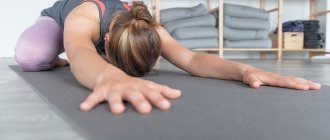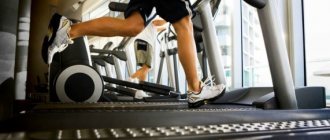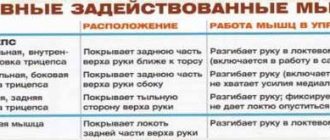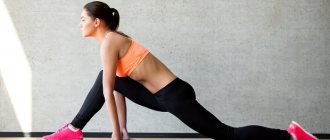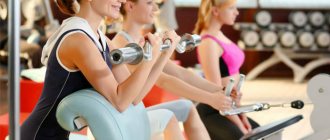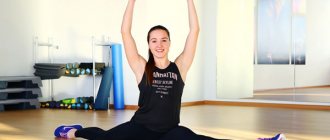Maria Andrianova
stretch coach and certified personal fitness trainer
What myths exist about stretching? How not to harm the body when stretching?
Stretching is the most important element of training, ensuring its safety and effectiveness. Stretching is becoming more and more popular, and it is certainly a worthy initiative, but there are many stereotypes around this topic. And while some of them are frankly amusing, others can be harmful to health. We'll tell you which rumors you really shouldn't trust.
Photo: istockphoto.com
All types of stretching work the same
There are at least three types of stretching, but in fact there are many more.
- Dynamic stretching
uses the maximum amplitude of muscle movement, but does not go beyond it. Stretching occurs when you move. - During static stretching,
you need to relax and freeze in a certain position for about 60 seconds, concentrating on your sensations. - Passive stretching
is a type of stretching in which a partner helps you stretch.
One of the most effective and safest is dynamic. Here the muscles work in concentric and eccentric modes, you have complete control over the movement and work within amplitudes acceptable to you. While passive stretching is considered the most traumatic and represents the use of external physical force. Using this type of stretching, you do not control the load, and the muscles work ineffectively.
Recovery for muscles. How to properly stretch after a workout
Stretching for professionals: how to get rid of tightness in different parts of the body
What are the benefits of individual lessons at a pole dance school in Moscow?
In addition to a personal trainer and a carefully selected training program, individual training in a stretching studio will allow you to achieve the desired results as quickly as possible and just have a good time. You don’t need to be distracted by anyone or embarrassed by strangers, the instructor’s full attention is for you. In addition, stretching has a wonderful ability to relieve stress and fatigue. Even after work, stretching classes will make you feel rested and relaxed.
Our studio provides its students with all the necessary amenities. In addition to the bright hall, you will find a ladies' room, changing rooms, shower, minibar and Wi Fi. And after class, you can always have a cup of tea and an interesting conversation with your instructor.
You can't stretch if you have back problems.
If you have acute back pain, you can’t exercise, that’s a fact. First, we remove the source, relieve the inflammatory process, and only after that we move on to classes. But problems with the spine - poor posture, hernia and protrusion - are extremely common in people. If you practice wisely, there will be no harm. On the contrary, stretching along with breathing and coordination and balance exercises can improve your back condition. Scientists have proven that if you stretch for at least 20 minutes a day, back pain will decrease after three months.
Photo: istockphoto.com
Don't expect results too quickly
If you are fired up and want to quickly do the splits, then keep in mind that for a person who is flexible by nature, it may take up to two months to get the longitudinal splits without losing your health or damaging your joints.
How long does it take to do the splits? For an ordinary person who is not gifted with natural flexibility, a period of six months is quite realistic to do the longitudinal splits.
Cross twine may require more time. Moreover, you will need to train at least 4-5 times a week for 30-50 minutes.
See the set of exercises “Splits in 30 days”
Forcing exercises, violating reasonable requirements, artificially increasing flexibility with the use of excessive loads can result in disability or result in extremely unpleasant delayed consequences. Especially in mature years.
Be patient, developing flexibility takes time.
Stretching always hurts, so you have to be patient
Perhaps it’s time to hang a sign in every studio: “Do not tolerate pain!” Pain is a danger signal sent by the nervous system. Enduring pain is a direct path to injury. There is a pain scale from 0 to 10, where 0 means I don’t feel anything, and 10 means unbearable pain. So, in classes you should always be between 5-6 points. It can be a pleasant, sometimes nagging sensation, but not a sharp and burning pain. You should learn to listen to the body and recognize signals.
Photo: istockphoto.com
Remember Compensatory Exercises and Symmetry
The human body is a complex biomechanical system regulated by brain signals. It is impossible to stretch the body in one place without consequences without destroying the balance.
Balance requires stretching opposite parts of the body as well. For this, there are special compensation exercises that should be used immediately after some stretching.
And, of course, the body should be stretched symmetrically, giving equal attention to each limb or half of the body. If you stretch your right leg for 10 minutes, be so kind as to stretch your left leg for the same amount. Nothing less. Only in this case can you count on the benefits of stretching exercises.
Look at the stretching with Ekaterina Firsova on the blog - you can’t help but like this complex! She will teach you how to pull the twine correctly!
If you don’t constantly stretch, the splits will disappear.
If you practice with working amplitudes, constantly train the nervous system by working with muscles, and use the overload method, then you will be able to do the splits even after a month of break. The body will get used to it and remember everything you taught it. But you need to use all types of stretching (except passive!) and use what you have taught your body. Otherwise, rollbacks will occur without interruption.
Stretching is a great way to relieve fatigue at the end of the working day, tone your muscles, and improve elasticity and mobility throughout the body. However, just stretching is not enough; integrate exercises for control, coordination and strengthening of the muscle corset for maximum results.
How often should you do stretching exercises?
Is it possible to stretch every day? Don't forget that muscles need time to adapt. Don't pull them ten times a day. Stretching is not a case of more being better. Muscles need rest after a serious load, which, of course, is stretching.
On the other hand, stretching too infrequently will have virtually no effect. Rare means less than 3 times a week.
The best option is to do stretching exercises daily, once a day.
By the way, you can use changing the intensity of stretching from day to day, that is, training cycles, and be sure to use the principle of progressive overload.
Super series and trisets applied to flexibility exercises will also be useful.
Basic exercises for weight loss
You can exercise in the gym under the guidance of a trainer or at home - on your own. We offer several exercises that will help beginners lose weight faster and get a toned figure.
- In a standing position, place your feet shoulder-width apart and bend your knees slightly. Raise one hand up, stretching, then lower it down. Repeat with the second hand. And so three to five times for each hand. Exercise helps you lose weight in the thighs.
- Standing, feet shoulder-width apart. The left hand is placed on the waist, the right one covers the head and tilts it to the right. You need to remain in this position for 15-20 seconds, then return to the starting position. Rest for ten seconds and repeat on the other side: right hand on the waist, left hand on the head. Just eight to ten repetitions.
- Sit on the floor and spread your legs, clasp your hands behind your head. Then bend over, reaching towards your right knee, then towards your left. Repeated six to eight times. This helps reduce volume in the waist and hips.
- Standing on all fours, stretch your right arm forward and your left leg back. Try to keep them parallel to the floor. Hold for 15 seconds, return to the starting position. Change arm and leg. Repeat six to eight times on each side. When performing this exercise, the muscles of the hips, ankles, waist, and sides are stretched, which helps to lose weight in these places.
- Lying on your back, raise your extended legs up, grab your feet or shins with your palms, hold for 15 seconds, then lower your legs to the floor. There should be six to eight repetitions.
- Sitting on the floor, bend your knees and bring your feet together. The back should be straight. Now you need to clasp your feet with your palms and stretch down, trying to lower your knees lower. Six to eight reps.
- Lying on your stomach, bend your elbows and place your palms on the floor under your shoulder joints. Tighten the muscles of the pelvis and abs, raise the body with outstretched arms. In this case, your hips should lie on the floor. Remain in this position for 10-15 seconds, then lower down. The number of repetitions is five to seven. This exercise activates the abdominal and back muscles.
When choosing exercises for stretching, you should focus on your own feelings. The main load should fall on those areas of the body where you want to remove excess weight.
When will I do the splits?
Before I answer this question, I want to address everyone who is reaching out or thinking about starting this endeavor. Stretching cannot be rushed! Never rush, don’t invent deadlines for yourself. Yes, I understand, sports people often set goals for themselves, persistently pursue them, rush when deadlines are approaching, act as heroes and achieve their goals at all costs. This is commendable in most cases. But when it comes to stretching, this approach can play a cruel joke on us. The secret of success here is a measured load and a reasonable approach.
I can’t say how quickly people master the splits on average. Because to answer this question I need a list of source data. We need to understand whether the person in front of us is athletic, whether he has a tendency towards flexibility; the ratio of collagen and elastin, joint mobility, body pliability, pain threshold, age, and training intensity also play a role here.
If you have enough persistence and a smart approach to training, then you will inevitably achieve success! I have witnessed truly beautiful changes in the human body. Believe me, it's worth all the effort and your time!
Some needed 2 years to master the splits, some needed a week . Don't compare yourself to others, compare yourself to yourself yesterday.
Myth 4. You can’t pump up your muscles - you’ll lose flexibility
Flexibility and strength complement each other. To control your movements, you need strong legs - otherwise you will simply “crawl” into the splits. Therefore, you should not give up squats. Simply end your strength training with light stretching and alternate strength training with stretching throughout the week.
This is also true for the reverse situation: even if it is more important for you to build muscle mass, do not forget about stretching.
I often hear: “I run a lot and am so strong, which means I don’t need the splits at all.” It's just the opposite. To make your muscles less sore, you need to stretch. Balance is really important here. If you overdo it with stretching, the strength may go away. If you overdo it with strength, you will experience soreness - muscle pain after training.
Yulia Kabatova, general physical training and stretching coach
Nutrition rules for losing weight
Proper nutrition is of great importance for effective weight loss. This is the only way to make training comfortable and get results.
- The first rule is to drink enough water: at least two liters daily.
- The second point is that the diet must contain foods containing fatty acids, otherwise it will not be possible to achieve the desired muscle elasticity. There are many such substances in nuts, vegetable oil, avocado, and fish.
- The third condition is more vitamins, which are abundant in fresh vegetables and fruits.
- Fourth, reduce salt in the menu: from its excess, the ligaments become stiff.
- Fifth, eat as little sugar as possible or remove it from your diet altogether.
- The sixth rule is that it is better to eat food an hour and a half before training and no earlier than an hour after it.
To lose weight, you need to eat well: your diet should have enough water, vitamins, fatty acids, protein, and as little sugar and salt as possible.
WHY DO YOU NEED SPLIT?
Twine is present in many sports (figure skating, gymnastics, etc.), in martial arts, as well as dances (strip plastic, modern jazz, pole-dance, tango, hustle, etc.).
However, stretching is not just for athletes. Stretching to the splits improves the mobility of the pelvic joint, has a positive effect on the intestines and genitourinary system, improves blood supply to the thighs, which in turn helps in the fight against cellulite. Well-stretched thigh muscles relieve stress on the joints. For example, stretching the hamstring muscles relieves stress on the knee joint, allowing for proper weight distribution when walking, which will help prevent many knee diseases (see the article “Stretching therapy or splits for heels”). A well-stretched quadriceps (the front surface of the thigh, which is pulled during the longitudinal split) will help maintain correct posture and a healthy spine. People who engage in sports and stretching age more slowly and remain healthy and active longer.
In addition to all these scientific factors of the benefits of splits for the body, there is also a simple, human one: the production of endorphin - the hormone of happiness in connection with the pleasure received from feeling your toned, flexible body. Feelings of self. There is not a single person who has a beautiful, fit, flexible body who would ask the question “Why is this necessary?”
